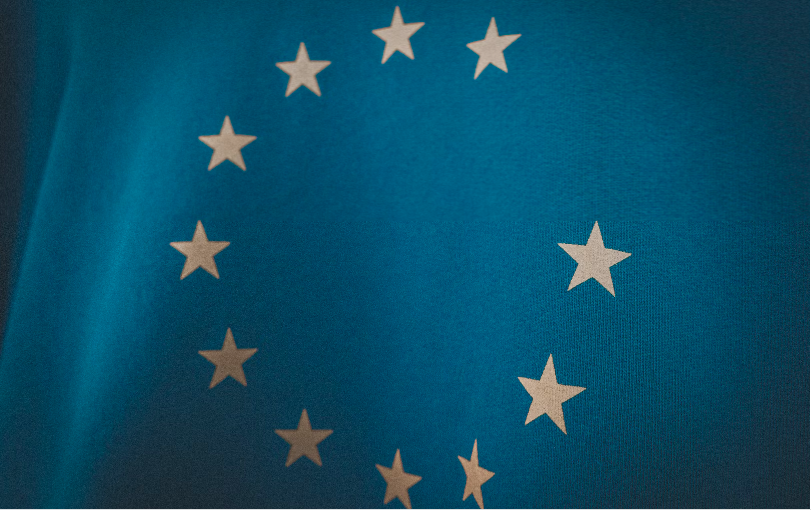Image from Unsplash: https://unsplash.com/photos/kWeQAvVeboA by Christian Lue
European border management practices have undergone an astonishing transformation in the last few decades, and this process is both co-constitutive of and constituted by technological advancement. New dynamics and effects are unfolding every day.
The objective of this article is to point out some of the complexities and controversies of the relationship between technological development and the securitisation of migration. This objective is achieved by analysing the functioning of one of the more important European border management instruments: the European Border Surveillance System (EUROSUR).
What is EUROSUR
“EUROSUR”, was launched on October 10th 2013: It is “a framework for information exchange and cooperation between Member States and Frontex to improve situational awareness and increase reaction capability at the external borders.” EUROSUR is run by Frontex, and uses advanced technology such as drones and satellites as a form of surveillance. It can be understood as a large data bank that allows information on refugees that cross illegally into the EU border to be shared and aggregated amongst member states and Frontex in order to improve border management.
Eurosur can be viewed as a “system of systems” a digital infrastructure with several nodes dislocated around Europe. Each Member State, in fact, has a National Coordination Centre (NCC) that exchanges information with all authorities responsible for external border monitoring, as well as with other NCCs and Frontex.
Figure 1 (Source: Frontex 2015) : Visualizing Eurosur, an interconnecting infrastructure
The NCCs maintain national situational pictures, which aggregate in the European situational picture, that provides a nearly real time mapping of the relevant events occurring at the EU external border, and determines the type and amount of assets that need to be deployed, according to the impact and risk level associated to a border section (green means low, yellow means medium and red means high - as the reader can see in the picture below). A higher impact level means that a given border section is more likely to be subjected to strong migratory pressures, and therefore, more resources should be preventively deployed to that area in order to improve border stress capacities. This calculation occurs through the collection of historical data and the detection of patterns of events in order to evaluate possible future risk scenarios. EUROSUR hence both serves an archiving and anticipatory function.
Figure 2: Demonstration of border sections and their respective impact levels (Source: European Commission 2013): https://ec.europa.eu/home-affairs/policies/schengen-borders-and-visa/border-crossing/eurosur_en
By: Federica Montanaro, Maria Makurat, Giovanni Tricco
EUROSUR: Challenges and controversies
As stated by the dedicated regulation, EUROSUR is being used to achieve three major goals: increasing situational awareness; improving border authorities' reaction capability; and finally, saving the lives of immigrants at sea, particularly in cases of overloaded vessels, as Dirk Vande Ryse, Frontex's Director of Monitoring, Analysis, and Vulnerability, pointed out.
Human rights implications with EUROSUR
In general, political elites usually focus on saving lives at sea, the core priority of EUROSUR. For example, in the aftermath of the 2013 infamous shipwreck near Lampedusa, the EU commissioner Cecilia Malmstrom presented the incoming deployment of Eurosur as a strategic move aimed at improving the EU efficacy in search and rescue (SAR) operations. However, already during its launch, concerns were expressed whether refugees would truly benefit from this type of surveillance. Opinions were split on whether Frontex and EUROSUR actually had the goal to save refugees or if deterrence was the main concern. A harsh debate is still ongoing, but its openness and democratic nature is heavily contested; scholars and experts are struggling to find reliable information which allows the monitoring and evaluation of the functioning of such said system. This is mainly due to the classified or reserved nature attached to the work it performs. One improvement shows that the system is being scrutinized more closely and undergoing new regulations such as the Regulation (EU) 2021/581 introduced in April 2021 with the following goals: more secure information exchange, more effective reporting, better efficient rescue operations, better cooperation with third countries involved and setting up an independent Security Accreditation Board. This should bring about improvements to tackling the issues of transparency and secrecy, however questions remain such as whether the willingness to share data will take place and which criteria are in the end important to deem such a system effective in the long term run?
However, looking at the bigger picture, the virtually nonexistent impact of the Eurosur on the SAR capability of the EU and its member states can be easily demonstrated by considering 2013 (the year of the deployment of the apparatus) as a benchmark, and by considering the death rate in the Mediterranean Sea before and after this critical date. An International Organisation for Migration report shows that before and after 2013 there has been no significant change in the fluctuation of the death rate. On the contrary, the United Nations High Commissioner for Refugees (UNHCR) denounced that in some instances the death toll was rising even in periods in which the number of arrivals was declining. This is even more astonishing if we consider the 2011 Frontex statement about the incredibly high number of boats (98%) that they were able to detect at sea even before their arrival to the European shores.
Conclusion
In conclusion, while technological progress is central to the management and surveillance of the Mediterranean, it is not clear whether it is also as important for the safety of migrants at sea. The numbers seem to prove that with or without EUROSUR people on the move continue to die at European shores, testifying that higher visibility does not automatically lead to a lower death rate. The objective of this article was to shed some light on the issue, while calling for further and in depth research.

No comments.